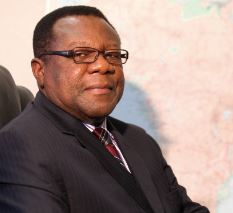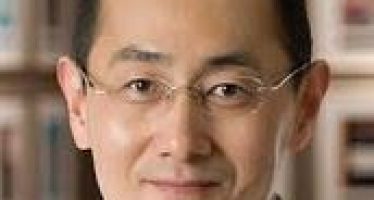Emmanuel Nnadozie, ACBF: Africa – BRICS Partnership Is Growing Rapidly

Emmanuel Nnadozie
Emerging trends show that recently the BRICS group has become a major force in the global economic arena. The OECD predicts that the balance of economic power is expected to shift dramatically over the next fifty years with China becoming the world’s largest economy (replacing the United States). India’s GDP growth is also projected to outpace that of the United States. Thus partnerships with BRICS countries will become even more important over time.
The cooperation between Africa and the BRICS has gained new momentum and generated much interest in recent years. This is because these countries, particularly Brazil, China, India and South Africa, have begun playing an increasingly prominent role in global trade, finance, investment and governance. Within this trend, Africa has deepened its engagement with these countries, not only in terms of trade, investment and development finance, but also in terms of diplomatic and cultural relations. The size of the BRICS economies, their economic potential and their demand for a stronger political voice on the international platform make them particularly relevant to Africa’s development.
What effect could BRICS trade, investment and aid have on growth, employment and structural transformation in Africa? How can Africa maximize the positive effects of its interactions with the BRICS, and minimise the costs? This study undertakes a comparative analysis of the BRICS practices in their cooperation with Africa, and their implications for addressing the pressing challenges of strong and sustained economic growth, employment and structural transformation in Africa.
The greatest impact of BRICS on Africa will emanate through three key channels: Trade, investment and development assistance. Already, in all three areas, the impact of BRICS is being felt strongly across the continent although significant differences exist in the breadth and depth of each BRICS country’s engagement in Africa.
BRICS Impact on Trade
The successful experience of the BRICS and other countries over the past half century (China, Malaysia, Thailand, Brazil, Chile, Taiwan, Singapore and South Korea) has amply demonstrated that trade can be an important stimulus to rapid economic growth. The response in Africa is particularly strong, reflecting the growing trade ties that these countries have forged with BRICs in recent years. Particularly for Africa, trade with the BRICS bloc has grown faster than the continent’s trade with any other region in the world, doubling since 2007 to $340 billion in 2012.
China’s imports from Africa increased by more than twice the rate of its imports from Europe and the United States did, at 28 per cent between 1995 and 2008. It is projected that Africa-BRICS trade will reach $500 billion by 2015.
“The greatest impact of BRICS on Africa will emanate through three key channels: Trade, investment and development assistance.”
However, there are several risks that Africa must take into account in its trade cooperation with the BRICS. First, trade-led growth of national output may have little impact on employment and development. This is particularly the case where most of the trade is in primary commodities with few linkages and where a large proportion of export earnings accrue to foreigners. This not only biases the economy in the wrong direction but also reinforces internal and external dualities and inequalities.
The ability of African countries to use trade with the BRICS to achieve development aspirations largely depends on their ability to negotiate favourable trade concessions from BRICS.
BRICS Investment in Africa
Even though Africa’s trade with and FDI inflows from traditional partners remains crucial, the largest increase in FDI has come from the BRICS. Their contribution has increased continuously, falling only slightly in 2009 due to the global financial crisis. FDI inflows from BRICS were, until 2002, dwarfed by those from the UK, the US and other traditional western sources. Recent data suggests that FDI flows to Africa from India, China and Brazil have risen on average 18% annually between 1995 and 1999 and 21% between 2000 and 2008. This is important for Africa as FDI is one of the major catalysts for promoting economic growth and development.
In light of the significant BRICS FDI flows to Africa, the continent needs to ensure that certain conditions are met in order to benefit. Bengoa and Sanchez-Robles (2003) counsel that, in order to benefit from long-term capital flows, the host country requires adequate human capital, sufficient infrastructure, economic stability, and liberalized markets. Since BRICS-Africa cooperation also include technical cooperation and development aid channelled into projects such as infrastructure, education among others, there is the potential for this cooperation to enhance the positive benefits that can accrue from increased FDI from BRICS.
BRICS Development Assistance
In general, the impact of development assistance on a recipient country is not automatic. Critical are the mode and type of aid as well as the recipient country’s socio-economic as well as political environment in enhancing the growth impact of aid. With the above in mind, BRICS development assistance can be harnessed within a framework that will lead to the realization of economic growth and employment creation in the recipient African economies.
The contribution of the BRICS to development financing has increased over the last decade with China leading the way. However, data on exact figures remain challenging. Nonetheless, BRIC countries continue to be supportive of Africa’s development through project aid, aimed at improving infrastructure on the continent, the provisioning of concessionary and soft loans, credits and grants. The focus on infrastructure has been complimentary to aid from OECD countries and led to an increase in power generation and transport networks.

All BRICS Are Not Created Equal
There are some key elements common to the BRICS cooperation with different parts of Africa. The first is that their volumes, particularly of trade and investment, have increased substantially since the turn of the century. The second is that there is a growing diversity in the range of their sectorial interests, even as strategic considerations continue to drive their overall engagement. The third is that geographical distribution is changing, as noted in the various sections, with each country spreading out from its original comfort zone. The fourth is that there is a strong partnership between the state and the private sector of the countries.
Three main differences could be highlighted in the activities and practices of Africa’s BRICS partners. First, China stands out as by far the largest BRICS partner of Africa in terms of trade, investment and development finance. It has the widest country coverage, providing some aid to almost all African countries, although large development financing activities are concentrated in a few resource rich countries.
Second, Brazil differs from China and India in that it provides very little support in the form of loans. Brazil emphasizes in-kind technical assistance as a way of transferring technology and good practices. It generally does not provide concessional loans to its African partners, but it subsidizes the engagement of its state-owned and privately owned multinationals. China and India provide a significant amount of project grants, but these are mainly tied to equipment and services from the respective countries. They also make extensive use of concessional loans and often attach their development assistance to the procurement of goods and services from their domestic firms or in some cases, to access natural resources.
Although Africa’s export (mainly food products) to the Russian Federation represents only 1% of its total exports to BRICS, Russia’s export to Africa has been increasing over the years to reach 7% of total BRICS export to Africa. While Russia has provided development assistance focusing mostly on food security and education, Russian corporations are investing in the areas of fuel and energy.
South Africa has used diplomacy and its increasing political influence in the rest of Africa to promote its interest, for instance through sponsoring of peace talks across the continent and contributing to peacekeeping across the continent. South Africa has also established many bilateral commissions with other African countries and promotes South African investments in the continent through the state-owned Industrial Development Corporation and the Development Bank of Southern Africa. As a result South African firms are playing significant roles in banking, retail, telecoms, food and mining.
Lastly, while all BRICS countries engage in trade, investment and aid activities, China and India have been significantly more active in this respect, with China being more unequivocal. Brazil and Russia on the other hand have tended to keep their aid, trade and investment engagements relatively more distinct.
BRICS to Promote Growth and Jobs
Thus, in order to maximize the benefits of the increasing cooperation with the BRICS, African nations need to take Africa-BRICS trends into account in their planning for long-term economic progress. The continent needs to be assertive when negotiating cooperation with BRICS, with the ultimate goal of building Africa’s productive capacities. In this regard, all areas of cooperation have to be pursued with a view to creating avenues to stimulate production and entrepreneurial development. This essentially implies that any potential cooperation should target sectors that have potential to generate sustained growth and employment, such as agriculture and manufacturing which then has to be linked to industry through agro-processing.
A key policy issue for Africa is how to make growth more resilient and job-creating. African countries must capitalize on their cooperation with BRICS to develop sectors that have a substantial multiplier effect in their economies and that could impact positively on growth and employment through the different linkages.
A good way of looking at Africa’s problem of unemployment is to look at youth unemployment. Africa’s young population is growing rapidly and is getting better educated. With almost 200 million people aged between 15 and 24, Africa has the youngest population in the world. And this demographic keeps growing rapidly and is expected to double by 2045.
Strategies required to stimulate employment growth include: The encouragement of export diversification; the strengthening of inter-sectorial linkages; and, the adoption of labour-intensive techniques. Others include the maximization of private-sector job creation capabilities through minimizing the constraints on investment and growth, as well as reducing taxes on producer prices to ensure that labour benefits from improved terms of trade. Therefore, in cooperating with its BRICS partners, African countries must ensure that their agreements reflect these policy imperatives aimed at addressing unemployment.
In the absence of diversification and transformation, many African countries continue to be vulnerable to external shocks. In other words, high and sustained growth rates in Africa must be underpinned by substantial economic diversification and structural transformation.
Transforming Africa with BRICS
At the heart of the structural transformation agenda is the strengthening of the industrial sector. Globally there are important lessons that can be learnt from the success of BRICS and other emerging economies in enhancing their economic growth rates. The expansion of their manufacturing sectors over the past two decades is suggestive of the fruits to be obtained from this development path.
However, the very export driven success of BRICS countries and South East Asian economies makes it globally difficult for African countries to simply follow in their footsteps. For this route to promoting industrialisation is now heavily restricted by the trade-policy liberalisation that has accompanied deepening globalisation. Moreover, the export-intensive route makes it difficult for new entrants that now have to compete not just with the industrialised world but also other successful exporting economies.
Africa’s resource endowments also create opportunities. The continent’s countries have to embark upon an industrial strategy aimed at maximizing backward and forward processing linkages from the commodity sectors as a major source of potential benefits. This strategy will yield many benefits. Employment is the obvious one but also price and non-price ones may be obtained.
The experience of resource-rich Venezuela, Argentina, Malaysia and Thailand suggest that the export success of resource-based industries was not so much the result of high level of initial skills and capital, but rather economic policies aimed at fostering their development.
As part of overall globalization process, Africa-BRICS cooperation carries benefits and opportunities as well as costs and risks – especially for low-income countries for who the stakes are higher. The cooperation presents new possibilities for broad-based economic development because the interaction can potentially benefit African countries directly and indirectly through cultural, social, scientific and technological exchange, as well as through conventional trade and finance. It could also lead to a faster diffusion of productive ideas, innovation and adoption of new technologies and to a more effective absorption of knowledge which is a key ingredient of wealth creation.
The potential downside is that this model can lead to a situation whereby African countries are locked into a pattern of development in which economic and social dualities are sharpened. This can lead to some people being completely bypassed. This is the basis of the argument that globalization may create or reinforce poverty traps and increased vulnerability to capital flows.
The success of the BRICS (though not in all cases) in promoting inclusive growth, employment and structural transformation to reduce poverty and inequality provide some valuable lessons for African countries. Overall, the critical building blocks that defined success were building human capital and improving access to assets; investing in infrastructure with structural transformation and jobs in mind; using well-designed social transfer programmes to address poverty and inequality and prioritizing inclusion.
Implications for BRICS
The growth slowdown in emerging economies, including the BRICS, raises some implications. The BRICS need to see cooperation with Africa as an important tool in their quest to resume being an engine of global economic growth.
There is a growing consensus that Africa is on the verge of an economic take-off and could become a new pole of global growth. This includes Africa’s untapped natural resource endowment, which provides significant investment potential; the continent’s steady population growth, which, if properly managed, could yield positive returns as well as increasing urbanization, the rise of the middle class and the untapped regional market.
Since 2003, many African countries have attained high economic growth rates, and in some cases, managed to sustain relative high rates throughout the global economic and financial and Eurozone crises. African countries have also witnessed notable improvements in the general macroeconomic environment, thanks to an increase in strategic and timely institutional reforms, as well as improved governance in many countries. Business environment is improving in many countries and as a result of improved macroeconomic conditions, Africa has successfully attracted increased FDI in recent years.
Yet the reality is that since independence, African growth has been driven mainly by primary production and export with limited economic transformation, rising unemployment and deepening poverty. However, African growth resurgence in the last decade has benefited from improvements in macroeconomic management, good governance and control of corruption such that apart from primary production and export, manufacturing, modern financial and telecommunications services and tourism are beginning to make significant contributions to growth. The growth resurgence has transformed Africa from the world’s lowest growing region of the past to one of the world’s fastest growing regions.
Notwithstanding, global economic crises and the resultant economic recession are bad for economic and social progress in Africa. Weaker global growth and continued Euro zone debt crisis present Africa with serious challenges and have led to a slowdown of Africa’s growth momentum. Economic growth in Africa declined from an average of 5.6% in 2003-2008 to 2.2% in 2009, 4.6% in 2010 and 4.2% in 2012. Therefore, it is in Africa’s interest to have a high performing global economy because a strong and growing global economy will benefit Africa through increased trade, financial flows (FDI, ODA, remittances), which are necessary for growth, employment and poverty reduction.
In light of Africa’s interest in global economic recovery we argue that both Africans and the rest of the world, especially the BRICS, should see Africa as part of the solution to the global economic crisis and invest in the continent for mutual benefit. Indeed, the emerging consensus is that the world needs a new driver of consumer demand, a new market and a new dynamo which can be Africa. Clearly an Africa that joins the ranks of global growth poles will benefit both it and the rest of the world.
Africa’s Response
How should Africa respond to the opportunities and challenges presented by Africa-BRICS cooperation and capitalise on it to promote growth, employment and structural transformation? Africa should design a BRICS strategy built on the inherent spirit of mutual interest and mutual respect.
The Africa-BRICS partnership must be embedded within the larger effort of promoting development. To promote growth, employment and structural transformation, Africa must develop strategies for maximizing the benefits of Africa-BRICS cooperation as a particular form of relations with the continent’s external partners.
Africa and its individual countries must deploy high-quality resources to manage their relationship with the BRICS countries. The continent must have a clear picture of its needs and requirements as part of the overall policy and planning framework of each country. A clear framework of objectives and priorities is essential as a basis for meaningful dialogue of equals. Maximizing the benefits of the partnership requires rectifying the capacity deficits that hinder the continent’s relationship management with its partners, especially with regard to understanding issues, coordination, negotiation, monitoring and competing.
The main deficits are the capacities:
- To understand the issues. This requires investing in research, stronger think tanks and conducting extensive background analysis of impact of BRICS and other major partners as well as putting in place mechanisms and processes for robust internal dialogue on relations with BRICS.
- To coordinate. African countries must have effective mechanisms for coordinating among themselves as well as encourage and support the participation of new actors and new processes in cooperation arrangements among countries.
- To negotiate. African countries also need to build negotiation capacity to be effective in bilateral forums, handle large and complex deals with BRICS and consider adopting a similar strategy of integrating trade, financing and development considerations in their approach to BRICS partners.
- To monitor. This requires enhancing the analytical capacity in Africa to monitor trade and financial flows and the implementation of agreed projects. Thankfully several countries are already formulating strategies for more effective engagement with BRICS and other Southern partners.
- To compete. Enhancing Africa’s capacity to compete in the global market is critical for African-BRICS cooperation but it requires promoting technology transfer and capturing the positive spillover from foreign investment and learning from the experience of the BRICS.
Africa’s relations with BRICS partners should be based on a clearly articulated African interest. The continent should then install the critical capacities that are required to participate as an equal in the requisite dialogue and negotiation.
In Conclusion
Africa’s high growth rates since the turn of the 21st Century have not translated into high levels of employment and reduction in poverty due to lack of meaningful economic structural transformation that entails a change in the structure of the economy over time from a subsistence economy, through industrialization, to an industrial or even post-industrial high-income society. Structurally transformed economies tend to be associated with steady, sustained economic growth rates combined with relatively low growth volatility and higher capacity to create jobs.
To support development aspirations beneficial to both Africa and the BRICS, the latter needs to support Africa’s efforts in looking for options for improving political and economic governance; for relaxing constraints imposed by human capital and infrastructure deficits; for unleashing Africa’s agricultural potential in the context of Comprehensive African Agricultural Development Plan (CAADP); for stepping up regional integration initiatives in the context of the Minimum Integration Programme (MIP) and efforts to boost intra-African trade.
The operations of the major partners in Africa are driven by their own economic and strategic considerations. The mix of trade, investment and to some extent aid helps to promote these interests. The most important message of the study therefore, is that Africa–BRICS cooperation is driven as much by market as by non-market and political-economy dynamics. This acknowledgment should underpin the continent’s strategy towards its BRICS partners. Its relations with them should be based on a clearly articulated interest. The continent should then install the critical capacities – which form the basis of the following recommendations – for it to take part as an equal in dialogue.
African countries’ ability to use trade with the BRICS to achieve their development aspirations largely depends on the capacity to negotiate favourable trade concessions. This includes how African countries negotiate their trade relations with BRICS-related multinational corporations. Moreover, the extent to which African countries efficiently use scarce capital resources while making maximum use of abundant but currently underused labour in producing their exports will determine how much export earnings benefit ordinary African citizens.
About the Author
Emmanuel Nnadozie from Nigeria is the Executive Secretary of the African Capacity Building Foundation (ACBF). Professor Nnadozie’s career spans over 20 years in the development sector. Prior to joining ACBF, he was Chief Economist and Director of the Macroeconomic Policy Division and before then, Director of the Economic Development and NEPAD Division of the United Nations Economic Commission for Africa (UNECA) which he joined in 2004. At the UNECA, Prof. Nnadozie led the production of the well acclaimed African Economic Report for 2010 and 2011 and the Least developed Countries Monitor. He also served as a UN Representative at various intergovernmental and continental forums and as coordinator for the UN system-wide support to Africa’s development as well as the focal point for UN/UNECA’s relations with African Union Commission, NEPAD Secretariat and the African Peer Review Mechanism (APRM).
About the ACBF

The mission of the African Capacity Building Foundation (ACBF) is to build human and institutional capacity for sustainable growth and poverty reduction in Africa. The Foundation’s key objectives are to build new capacity while strengthening and utilizing existing capacity sustainably. ACBF seeks to achieve development results through effective channeling of capacity to areas that spur economic growth and economic transformation, achieve poverty reduction, strengthen good governance and enhance Africa’s participation in the global economy. ACBF’s strength is in its credibility as an institution “for Africa by Africa” with Africans taking greater leadership in proactively addressing the continent’s challenges. It focuses on indigenous ownership, leadership, partnership, accountability and quality in its outputs and results, while nurturing the inter-relationship dynamics of major stakeholders in the capacity building process.
You may have an interest in also reading…
Shinya Yamanaka: Unlocking the Potential of Cells
Professor Shinya Yamanaka of Kyoto University is in the business of time travel. He discovered that fully mature cells can
EU Offers a Third Bailout: Greece Will Remain in the Eurozone but Austerity Stays too
The EU has survived the Greek debt default crisis and after seventeen hours of negotiations agreement for a third bailout
European Policy Centre on Financial Transaction Tax (FTT): Why the EU Needs the FTT but the FTT Does Not Need the EU
Background The nature of the continuing crisis in the euro area has changed several times. With the collapse of Lehman



















































































